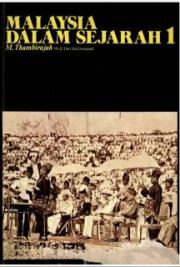Index
Ache, d’, Caran, designs silhouettes for Chat Noir, 98–99.
Actors, used with marionettes, in Italian church festivals, 51;
in medieval French churches, 82;
in Germany in seventeenth century, 123–125.
Aiken, Vivian, 183.
Alice in Wonderland, in Chicago, 178.
America, marionettes in, 163–191.
American Indians, use of articulated images in ceremonials, 164–170.
Ames, Winthrop, interest in marionettes, 184–185.
Ananda, annual performance in temple, 30.
Anatole, M., founder of the Vrai Guignol, 107–108.
Antinoë, excavation of marionette theatre in, 16–17.
Antiquity of puppets, 15.
Antwerp, underground theatre in, 141–142.
Apotheosis of Bacchus, representative Greek show, 19.
Apuleius, quoted on Greek puppets, 18.
Ariosto’s Orlando Furioso in Sicily, 71–76.
Aristophanes’ The Birds in puppet performance, 105.
Arlecchino, Italian puppet character, 22, 57.
Baden-Baden, puppet show of Ivo Pühony, 134.
Bali, Wayang plays in, 28.
Belgium, puppets in, 140–142.
Bergerac, Cyrano de, duel with ape, 84.
Berlin, production of Doctor Sassafras and Two Dancing Chinamen, 134–135.
Bertrand, French showman, 86–87.
Birds of Aristophanes produced, 105.
Black, John, 182.
Blei, Franz, quoted on shadow play in Munich, 132;
on types of plays for puppets, 210–211.
Bohemia, puppet plays in, 136.
Boinet, Paul, operator on La France, 109.
Bologna, theatres in, 69.
Bonifrates, definition, 80.
Boswell, quoted, 154.
Bouchor, Maurice, presents Noël ou le Mystère de la Nativité, 110–111.
Brann, Paul, founder of theatre in Munich, 130.
Briocci. See Brioché.
Brioché, Giovanni and Francesco, famous 17th century showmen, 84–86.
Broemel, Carl, 183.
Browne, Mrs. Maurice, founder of Chicago Little Theatre, 173–178.
Buelens, Pieter, Belgian showman, 141.
Buffano, Remo, 171.
Bulley, Margaret, 157.
Burattini, description, 54;
derivation of name, 55.
Burma, development of puppet stage, 29–30.
Caine, W., quoted on Paris Guignols, 197–198.
Calthrop, A., on modern Venetian show, 68.
Cardboard plays, 192–194.
Cascio, Salvatore, 172.
Cassandrino, Italian puppet character, 58, 60.
Catacombs, jointed images in tombs, 22.
Catania, religious plays in, 77–78.
Cecca, mediæval Italian mechanician, 51–52.
Central Asia, two types of puppets, 30.
Ceylon, early religious puppets, 33.
Chambers, E. K., quoted on use of puppets in churches, 53.
Champs Élysées, home of the Vrai Guignol, 107–108;
performances, 197–198.
Character types. See Types.
Charles V of Spain, 78.
Chat Noir, home of Ombres Françaises, 98–100.
Chicago Little Theatre, successful performances in, 173–178.
Children’s productions, 192–194.
Chopin, life enacted by Cleveland puppets, 182.
Christmas plays. See Religious plays.
Church festivals, in Italy, 51–52. See also Passion play; Religious plays.
Cibber, Colley, writes for marionettes, 153.
Cleveland, Italian performance in, 172;
Playhouse, puppet productions, 178–183;
performance of The Rose and the Ring, 200–201;
construction of dolls, 221–224.
Clisby, George, 179.
Cologne, home of Kölner Hanneschen Theatre, 128.
Comic element in puppets, 203–205.
Commedia dell’Arte, influence on Italian marionettes, 57–59.
Constantine, Italian puppet character, 58.
Construction of marionettes, 221–224. See also Materials; Mechanism.
Construction of marionette stage (O’Neil), 226–229.
Craig, Gordon, experiments with puppets, 160–163;
Game of Marionettes, 192;
on educational importance of puppets, 202;
on actor and marionette, 208–209;
on future of puppet plays, 214.
Crawley, London showman, 153.
Cruikshank, pictures of Punch and Judy, 149.
Cuccoli, Filippo, 69.
Curtis, Elnora Whitman, on educational value of puppets, 201–202.
Dalang, definition, 27.
Dame aux Camellias (La), parody on by George Sand, 94.
Death of Tintagiles, production in Cleveland, 179–180;
rehearsal of, 218–221.
Deaves, Harry, retired American marionettist, 171.
Deluded Dragon, produced at Chicago Little Theatre, 174–175.
Denmark, puppets in literature, 140.
Dickens, Charles, quoted on puppet shows in Genoa, 63–66.
Dickson (pseud.), operator-magician, 101.
Dieppe, annual Mystery of the Assumption, 82–83.
Docha, definition, 113.
Doctor Sassafras, artistic production in Berlin, 134–135.
Dolls, mechanical, in vaudeville, 170–171.
Domèvre, The Seven Chasseurs of, 111–112.
Don Quixote and the puppets, 79.
Dorothea, popular puppet character of Hamburg, 115.
Drama, poetic, difficulties of production, 190–191. See also Plays.
Drama, varied repertory of Italian marionettes, 59–62;
classic, given at Le Petit Théâtre de M. Henri Signoret, 102–105.
Duranty, Charles, attempt to uplift Guignol, 108.
Edgerton, Mrs. Seymour, 174.
Educational value of puppets, 195, 201–202, 213–214.
Egypt, possible birthplace of marionettes, 16.
Ehlert, Ernest, gives shows in Berlin with Pühony’s puppets, 134–135;
on Pühony’s marionettes, 206.
Elizabethan period, popularity of puppets, 150–154.
England, puppets in, 143–163;
toy theatres in, 193–194.
English literature full of allusions to puppets, 143–144.
Epopée, produced at Chat Noir, 99.
Erotikon Theatron de la rue de la Santé, sketch of, 94–96.
Eudel, Paul, first publishes shadow plays, 98.
Excavations reveal ancient puppets, 16–17.
Fairy plays, in the Ombres Chinoises at Versailles, 97–98;
in the Vrai Guignol, 108;
in Munich, 129;
at Chicago Little Theatre, 174–178;
produced by Tony Sarg, 186–187, 189;
specially suited to puppets, 212.
Fantoccini, description, 54;
derivation of name, 55.
Fashion puppet, Lady Jane, 152.
Faust, history of character, 116–122.
Ferrigni, P., on introduction of figures into Christian churches, 23. See also Yorick.
Fewkes, Dr. Jesse Walter, quoted on Indian ceremonial drama, 164–170.
Fiano Theatre, Rome, 60–61.
Figurini, derivation of name, 55.
Flögel, quoted on English masques, 145–146;
preference for grotesque comedy, 203.
France, Anatole, writes on the Chat Noir, 98;
quoted on Le Petit Théâtre de M. Henri Signoret, 103–105.
France, puppets in, 81–112.
Francisque, French showman introducing opéra comique, 88–89.
French writers and musicians, show interest in puppets, 89–96.
Fun in puppet-playing, 216–218.
Gautier, Théophile, on Turkish puppets, 37.
Gayet, A., on puppet theatre excavated at Antinoë, 16–17.
Gehring, Albert, 182.
Geisselbrecht, Viennese showman, 121.
Genoa, elaborate productions in, 62–66.
Germany, puppet shows in, 113–136;
toy theatres in, 194–196.
Gidayu, definition, 46.
Gidayu, Takemoto, 16th century showman, 47–48.
Glasheimer, Adolf, Berlin showman, 126.
Gleason, Arthur, describes Italian show in New York, 172–173.
Goethe, interest in puppets, 122;
maxim on stagecraft, 161;
quoted on his introduction to puppets, 195–196.
Golden age of marionettes, 89.
Goldoni, interest in puppets, 197.
Goldsmith, Oliver, at marionette show, 154.
Grasso, Maria, 172.
Greece, articulated idols in, 17;
development of puppetry in, 18–21.
“Green monster” of George Sand, 93.
Grotesqueness in puppets, 203.
Guignol, originated in Lyons, 107;
in Paris, 107–108;
on steamship La France, 109;
performances in Paris, 197–198.
Gyp, presents Tout à l’égout, 110.
Hamburg, long popularity of puppets in, 115–116.
Hanswurst, German puppet buffoon, 114.
Hauptundstaatsactionen, description of, 124–125.
Haydn, Joseph, composes music for marionettes, 127.
Hazlitt, William, on Punch and Judy shows, 212–213.
Hembauf, George, Belgian showman, 140.
Heron of Alexandria, on early Greek puppet mechanism, 19.
Hewelt, John (pseud.), operator-magician, 101.
Holden, Thomas, operator-magician, 101;
marionettes, 156.
Holland, puppets in, 140.
Hopi Indians, Great Serpent drama, 165–170.
Humor in puppet plays, 203–205.
Hungary, gypsy puppeteers, 136.
Idols, animated, in Egypt, 16;
in Greece, 18;
in Rome, 21;
of ancient Gauls, 81.
See also Images; Religious puppets; Statues.
Ilkely Players, amateur English marionettists, 157.
Images, jointed, found in Catacombs, 22;
religious, in Italy, 51–54;
articulated, used in mediæval French churches, 81–82;
in English churches, 145;
articulated, used by American Indians, 164–170.
See also Idols; Religious puppets; Statues.
India, antiquity of puppets, 15;
development of puppets in, 32–35.
Israeli, d’, Isaac, writes of Punch, 146–147.
Italy, evolution of puppetry, 22;
its development, 50–78;
Goldoni’s interest in puppets, 197;
puppets beloved by children, 199–200.
Japan, origin and development of puppet shows, 43–49.
Java, shadow-plays, 24–28.
Jinavaravamsa, P. C., on Indian puppets to-day, 34.
Joly, Henri, on antiquity of Japanese shows, 43–44.
Jones, Henry Festing, quoted on Sicilian shows, 71–77.
Jonson, Ben, mentions puppets in many writings, 150–151.
Joruri, Japanese epic play, 47.
Juvenile drama, 193–194.
Karagheuz, Turkish puppet hero, 37.
Kasperle, German puppet buffoon, 114;
in Faust play, 118–120.
Ketschel, Persian comic puppet, 32.
Kobold, definition, 113.
Kölner Hanneschen Theater, 128.
Kopecki, Bohemian showman, 136.
Kreymborg, Alfred, 183.
La France, puppet theatre on, 109.
La Grille’s Théâtre des Pygmées, 87–88.
Laufer, Dr. Berthold, on marionettes in Egypt, 16.
Laurent Broeders, Belgian showmen, 140–141.
Lemaître, Jules, describes several productions, 110–111.
Lewiss, Clunn, wandering English showman, 155–156.
Lighting a puppet stage, 227–229.
Lima Beans, given in Los Angeles, 183.
Literary puppets in Paris, 109–111.
Little Theatre, Chicago, history of, 173–178.
London, Italian puppets in, 146;
present-day street puppets, 155.
Los Angeles, puppets in, 183.
Louis XIV, puppets a feature of marriage procession, 79;
gives special privileges to La Grille, 88.
Lupi brothers, Italian showmen, 68–69;
description of performance for children, 199–200.
Luschan, von, F., on puppet plays in Turkey, 38.
Luther, Martin, denunciations against actors, 123.
Maccus, Roman buffoon, 21.
Machieltje, Belgian showman, 140.
MacLean, J. Arthur, on puppet performance at Ananda, 29–30.
Maeterlinck’s Death of Tintagiles produced in Cleveland, 179–180;
rehearsal of play, 218–221.
Magnin, Charles, on Greek articulated idols, 18;
on Polichinelle, 205.
Mahabharata, basis of Javanese plays, 26.
Making a marionette, 221–224. See also Materials; Mechanism.
Manik Muja, basis of Javanese plays, 26.
Margueritte, Paul, describes M. Signoret’s puppets, 207.
Marionette, derivation of name, 55.
Marionette Theatre of Munich Artists, 130–131.
Masques, English, 145–146.
Materials, used in ancient Indian puppets, 15;
in Javanese shadows, 25;
in Siamese shadows, 29;
in Cleveland Playhouse puppets, 179–180;
making a marionette to-day, 221–224.
Matthews, Brander, on types of plays for puppets, 211–212.
Maupassant, de, Guy, on Karagheuz plays, 39.
Mechanical dolls in vaudeville, 170–171.
Mechanism, of early Greek puppets, 18;
of Javanese shadows, 27;
of modern Indian puppets, 34;
of Turkish puppets, 38;
intricacy of in Japanese puppets, 45–46







